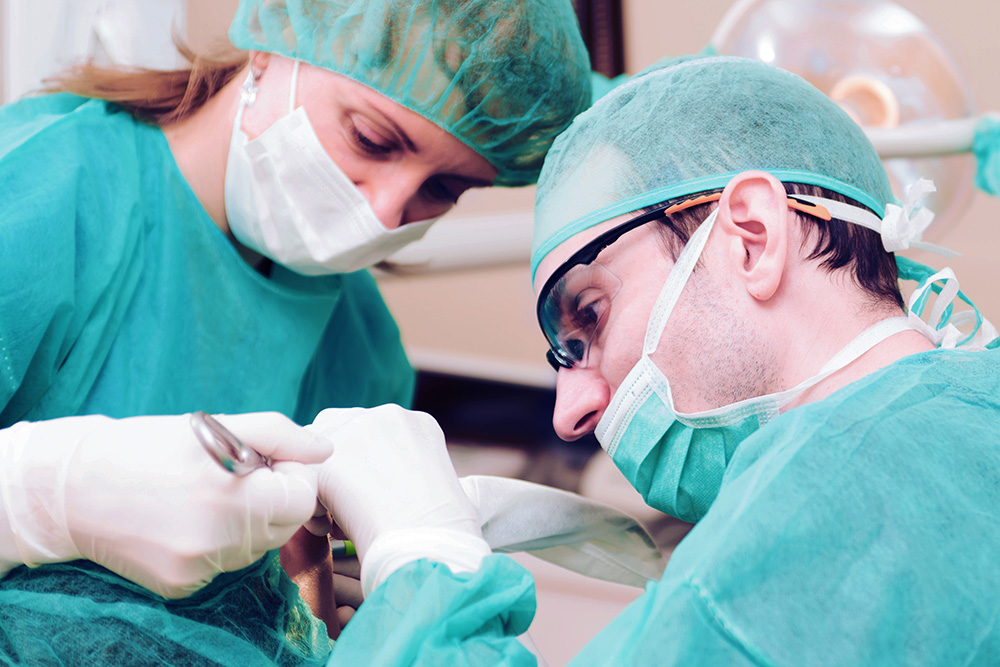The most frequent surgical labour in dentistry is the dental extraction. If a tooth is destroyed and can no longer be restored, or if it is the source of an infection which cannot be treated, it must be extracted. After extraction, it must be replaced with an implant or a dental bridge.
Lack of a tooth can complicate in time with:
- bone resorptions;
- occlusal dysfunctions (bite affectation);
- masticatory insufficiency;
- physiognomy affectation.
There are situations when am affected tooth can be saved by adjuvant surgical methods:
- periapical curettage – removal of the pathological tissues from the root tip;
- apical resection – removal of the root tip and the affected surrounding tissue;
- radicular amputation – removal of a destroyed root of a molar, preserving the other roots.

These surgical methods significantly reduce the extractions rate, allowing to preserve the teeth for a long period of time. These surgical interventions are carried out in our clinic, under infiltration anaesthesia, by experienced surgeons, with modern equipment which provide strict asepsis conditions.
If there is an important resorption (lack) of the bone tissue, bone addition (supplementation) surgical interventions can be performed in order to insert the implants or mobile prosthesis.

